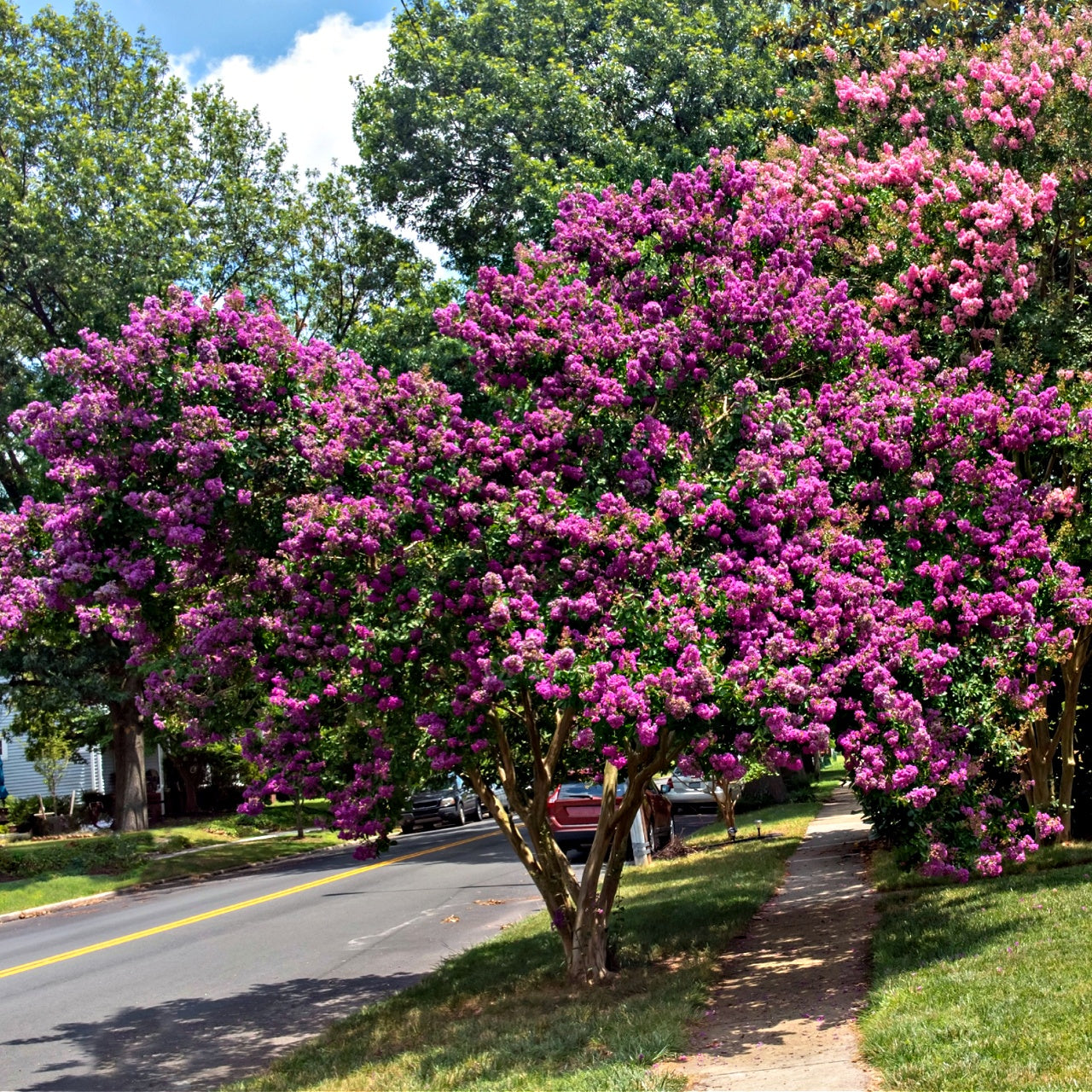Purple Crepe Myrtle Trees
Purple Crepe Myrtle Trees
This plant ships:
Ships November–April within 10 business days after the order is placed.Couldn't load pickup availability
Exposure
Full SunHeight at Maturity
Over 10 FeetUsage
FloweringShipped As
Bare-rootShips
Ships November–April within 10 business days after the order is placed.Planting Zones
7-9Purple Crepe Myrtle Trees
The Purple crepe myrtle trees are commonly found across the southern sections of the United States as a landscaping tree, providing a riot of color in early fall. Brownish to gray bark on a thin to medium trunk peels off to reveal newer, light gray bark.
The Purple Crepe Myrtle Trees Foliage Is Stunning In The Fall
Depending on the variety, glossy green leaves can turn color in fall. They are known for their abundant blooms, which look like clusters of ruffles ranging from white to deep Lavender and red.
There Are Several Types Of Myrtles
A few varieties have light to medium lavender or bicolor lavender flowers: Light lavender: Powhatan, Apalachee, and Muskogee. Medium lavender: Zuni and Lipan Bicolor: Conestoga and Yuma. Varieties range in height from less than 10 feet to over 30 feet, some with corresponding canopy spreads.
Characteristics
Canopy shapes range from round to upright; some may have branches hanging down. Purple Crepe Myrtle are moderate growers that like full sun and can do with mild water. You'll often find varieties in drought-prone Southern California and wetter areas like the U.S. Southeast. L. speciosa is a tropical tree and tends to be a fast grower that needs good trimming routines. Gardeners should note the cold hardiness zones, as some varieties are hardier than others. Frosts and freezes can affect foliage appearance.
The Purple Tree Blooms Summer And Fall
A few varieties may bloom twice during summer, but late summer to fall usually produces the most excellent show. Trimming must be done wisely. Many gardeners cut back purple crepe myrtles trees to stumps. Still, late winter pruning back to a bud or fork—and removing only a couple of feet to control height—ensures that the remaining branches are strong enough not to bend under the weight of the floral panicles.
Share






